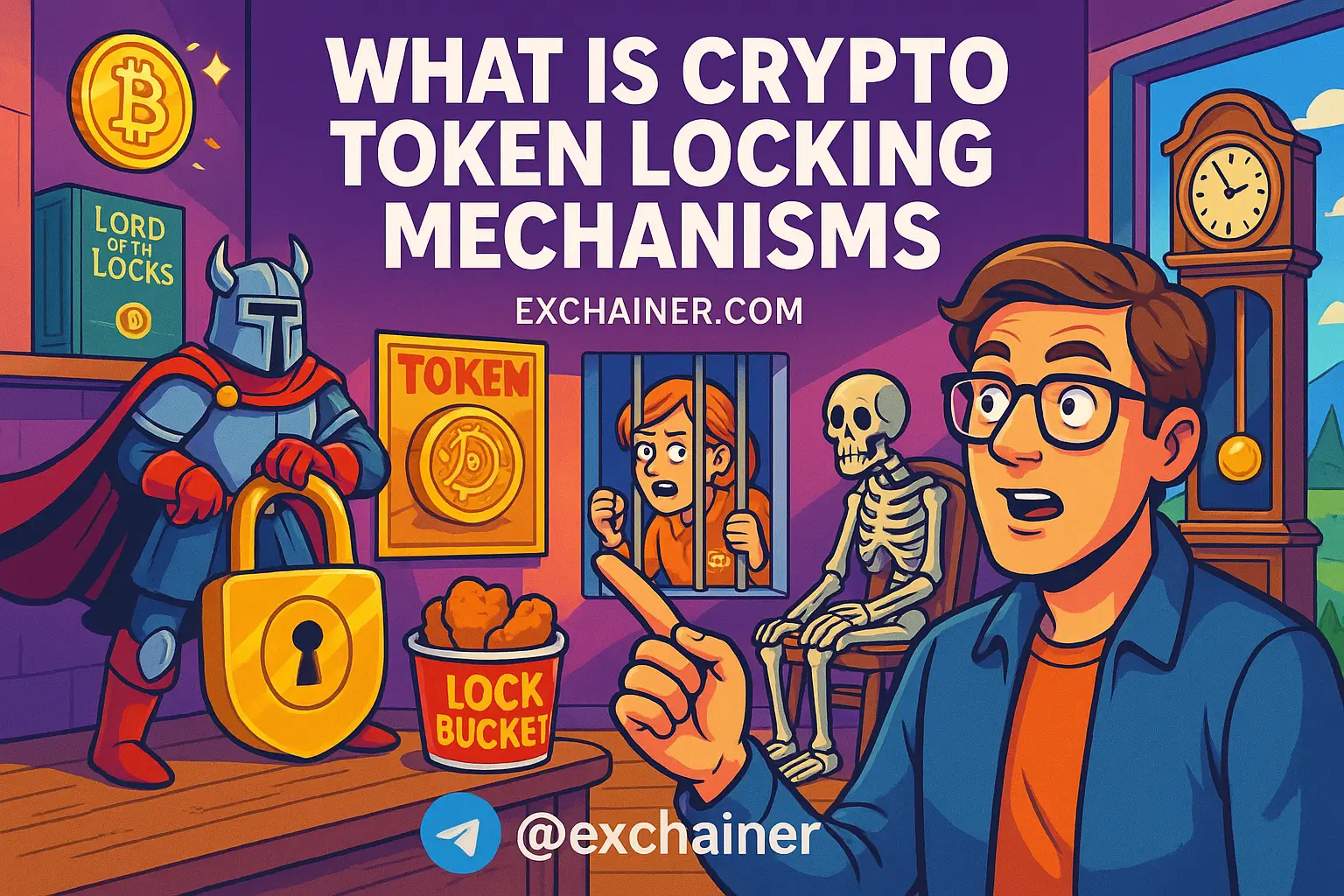Friends, if you’ve dabbled in cryptocurrency, you’ve likely bumped into the terms “slow transaction,” “network congestion,” or “sky-high fees.” These aren’t just buzzwords; they represent a fundamental challenge that can make or break a crypto project. When a blockchain network chokes under heavy use, users suffer from delays, increased transaction costs, and a frustrating experience. That’s why understanding how to analyze crypto project scalability is essential — whether you’re a token holder deciding where to invest, a developer building the next big thing, or an auditor examining project claims. Grasping scalability ensures you differentiate between projects that can grow sustainably and those doomed to stagnate.
So, what exactly is “crypto project scalability”? Put simply, it’s a blockchain’s ability to handle increasing transaction volume without compromising performance, security, or decentralization. But more importantly, knowing how to analyze crypto project scalability means applying a structured approach to assess the network’s capacity and limitations –– not just blindly trusting marketing claims or TPS (transactions per second) figures.
In this comprehensive guide, we’ll walk you through the core framework behind analyzing scalability. We’ll break down key scalability metrics, decode consensus mechanisms and network architecture, explore the pros and cons of layer-2 and off-chain scaling solutions, and dive deep into testing and benchmarking methods that separate hype from reality.
This guide is carefully crafted for different audiences: holders curious about their coins’ long-term viability, dev teams aiming to optimize their stack, and auditors tasked with honest assessments. By the end, you’ll have a practical checklist and solid understanding to evaluate real-world performance and scalability claims confidently.
Ready to unlock the secrets behind scalable blockchain projects? Let’s dive in!
Key Scalability Metrics to Measure
Before falling for a flashy project claiming “over 100,000 TPS,” it’s crucial to understand which metrics truly capture a blockchain’s scalability. Just like how a car’s speedometer alone doesn’t reveal fuel efficiency or comfort, raw TPS isn’t the whole story.
TPS, Throughput and Effective Concurrency
Transactions per second (TPS) measure how many transactions a network can process in one second under ideal conditions. It’s a headline metric but can be misleading. For example, 10,000 simple token transfers per second are very different from 10,000 complex smart contract calls happening simultaneously. This leads us to effective throughput, which accounts for concurrency — when multiple operations happen within the same transaction or block. Real-world load testing exposes effective concurrency, helping estimate how many independent transactions can be processed simultaneously without slowdowns.
Latency, Finality and User-Perceived Speed
Imagine sending crypto and waiting what feels like an eternity for confirmation — that’s latency. Latency is the time from submitting a transaction to seeing it confirmed on the blockchain. But there’s also finality, which means that after a certain point, a transaction cannot be reversed or altered. Some networks offer probabilistic finality (e.g., Bitcoin), where the chance of reversal decreases over time, while others provide deterministic finality (e.g., many PoS chains), instantly locking the transaction once confirmed. For users, finality impacts trust and experience; long waits can turn away newcomers, no matter how fast the theoretical TPS is.
Resource Usage and Cost Metrics
Scalability isn’t just speed — it’s also resource efficiency. Gas fees (the cost paid per transaction) often skyrocket during network congestion, pricing out small users. Watching gas per transaction is key to understand cost variability, especially during peak times. Another factor is the expanding state size, the amount of data nodes must store. Rapid state growth bloats node requirements, raising hardware costs or pushing users to trust fewer, more powerful nodes — hard compromises for decentralization. Keeping tabs on these costs sheds light on long-term scalability sustainability.
Consensus & Network Architecture
The beating heart of every blockchain is its consensus mechanism — how nodes agree on the state of the ledger. But different consensus types impose unique scalability trade-offs, largely determining throughput ceilings and security guarantees.
Consensus Types and Scalability Trade-Offs
Proof of Work (PoW), used by Bitcoin and Ethereum (still transitioning), relies on miners competing to solve cryptographic puzzles. Although battle-tested for security, PoW is resource-heavy and limits TPS due to block time intervals and block size constraints. Proof of Stake (PoS), adopted by many modern chains, lets validators stake tokens to propose blocks. PoS can offer faster block times and higher TPS but raises concerns about validator centralization.
Byzantine Fault Tolerant (BFT) consensus models, including Tendermint and HotStuff, scale well within smaller networks, boasting fast finality and low latency but facing limitations as the network size grows. Directed Acyclic Graphs (DAGs), like IOTA or Hedera, pursue alternative structures to enhance parallel processing, yet they’re relatively new and sometimes trade-off decentralization or security nuances.
Sharding, Partitioning and Parallelization Approaches
Sharding is the blockchain equivalent of splitting a highway into several lanes to boost traffic flow. By partitioning the blockchain state and transaction processing across multiple shards, networks can horizontally scale. Yet, complex cross-shard communication introduces latency and synchronization overhead, diluting performance gains if not designed well.
Node Requirements, Decentralization & Security Trade-Offs
Increasing throughput often means nodes must handle more data at faster speeds, requiring higher hardware specs. If running a validator becomes too demanding, decentralization suffers because only a few powerful entities can participate, risking cartelization. Balancing node resource demands against decentralization ensures robust security while preserving scalability.
Layer‑2 and Off‑Chain Scaling Solutions
One common pattern in scalability solutions is to move transaction load off the main blockchain, preserving security while boosting speed and lowering fees. Enter layer 2 scaling solutions, designed to complement existing chains instead of replacing them.
Rollups (Optimistic vs ZK) and Their Performance Profiles
Rollups bundle many transactions off-chain and submit a compressed proof on-chain. Optimistic rollups assume transactions are valid by default, allowing faster processing but requiring a challenge period to detect fraud. Zero-Knowledge (ZK) rollups submit validity proofs cryptographically verifying every batch instantly, enabling faster finality but at the cost of computing complexity. Both types dramatically increase throughput and decrease fees, but developers weigh trade-offs between security assumptions, user withdrawal times, and data availability.
State Channels, Sidechains and Payment Networks
State channels open a direct interaction line between two parties, enabling rapid transactions without broadcasting each move on-chain. Excellent for gaming or repeat micropayments, but less ideal for complex, multi-party interactions. Sidechains are independent blockchains running in parallel, connected to the main chain by bridges. They offer tailored scalability but can introduce risks if bridges break or are attacked. Payment networks, similar to Lightning Network for Bitcoin, specialize in offloading payment-type transactions, boosting UX.
Bridges, Composability and UX/Security Trade-Offs
As the DeFi ecosystem expands, liquidity fragmentation across chains is a headache. Bridges connect different blockchains, enabling asset transfers and composability — but many remain targets for hackers due to their complexity and trust assumptions. User experience suffers too, as cross-chain transactions add steps and risks of lost funds. Careful evaluation of bridging technologies and their security track records is imperative.
Testing, Benchmarking & Stress Tests
No scalability analysis is complete without solid testing. Only by pushing a network to its limits and measuring responses can one uncover real performance and potential failure points.
Synthetic Benchmarks vs Real-World Load Testing
Synthetic benchmarks focus on peak TPS numbers using simplified transactions. They create best-case scenarios and highlight theoretical ceilings but often skip complexities of real workloads. On the other hand, real-world load testing simulates diverse smart contracts, user behavior, mempool congestion, and network delays, offering a more accurate picture.
Interpreting Results and Spotting Failure Modes
When monitoring performance, watch for indicators like growing transaction queues, delays in block finality, or nodes crashing from running out of memory (OOM). Understanding whether these issues are transient (caused by temporary load spikes) or systemic (architectural flaws) is crucial for decision-making.
Tools, Frameworks and a Practical Test Checklist
Industry tools like Ethereum’s TxPool Benchmark, Chainlink’s Scaling Benchmark Suite, and bespoke network simulators help developers and auditors conduct controlled tests. A practical checklist includes:
- Defining realistic transaction mixes reflecting user actions.
- Measuring latency, throughput, and error rates under increasing load.
- Monitoring node resource metrics (CPU, memory, network).
- Testing layer-2 solutions integrated with the main chain.
- Documenting and analyzing unexpected failures.
Conclusion
To sum up, knowing how to analyze crypto project scalability empowers you to see beyond flashy promises. The core components include tracking important scalability metrics such as TPS, latency, and resource costs; understanding the underlying consensus mechanisms and their trade-offs; assessing layer-2 technologies that offload the main chain; and conducting robust testing to validate claims.
Ready to put this into practice? Remember the step-by-step framework: start by capturing your project’s key metrics under various load conditions, dive into architectural details evaluating how consensus and sharding impact performance, assess what layer-2 options are in place and to what extent they mitigate bottlenecks, and finally, design a thorough benchmarking plan to stress test the network in realistic scenarios.
Watch out for red flags like unchecked state bloat, opaque or insecure bridge mechanisms, extravagant TPS claims without data to support, and absence of thorough testing results. These often hint at scalability challenges lying beneath smooth marketing material.
Scalability isn’t just a tech jargon puzzle—it’s the backbone of real user experience, project sustainability, and investor confidence. By thoughtfully applying this analysis framework, you join a growing community of informed stakeholders shaping the future of decentralized technology.
For more deep dives and tools to help you master crypto fundamentals, be sure to visit our Crypto 101 category and get the latest on platform comparisons in our Exchange Reviews category. Don’t forget to check out handy Tools and Wallets to keep your crypto game strong and secure.
Stay curious and keep scaling your knowledge one block at a time!












